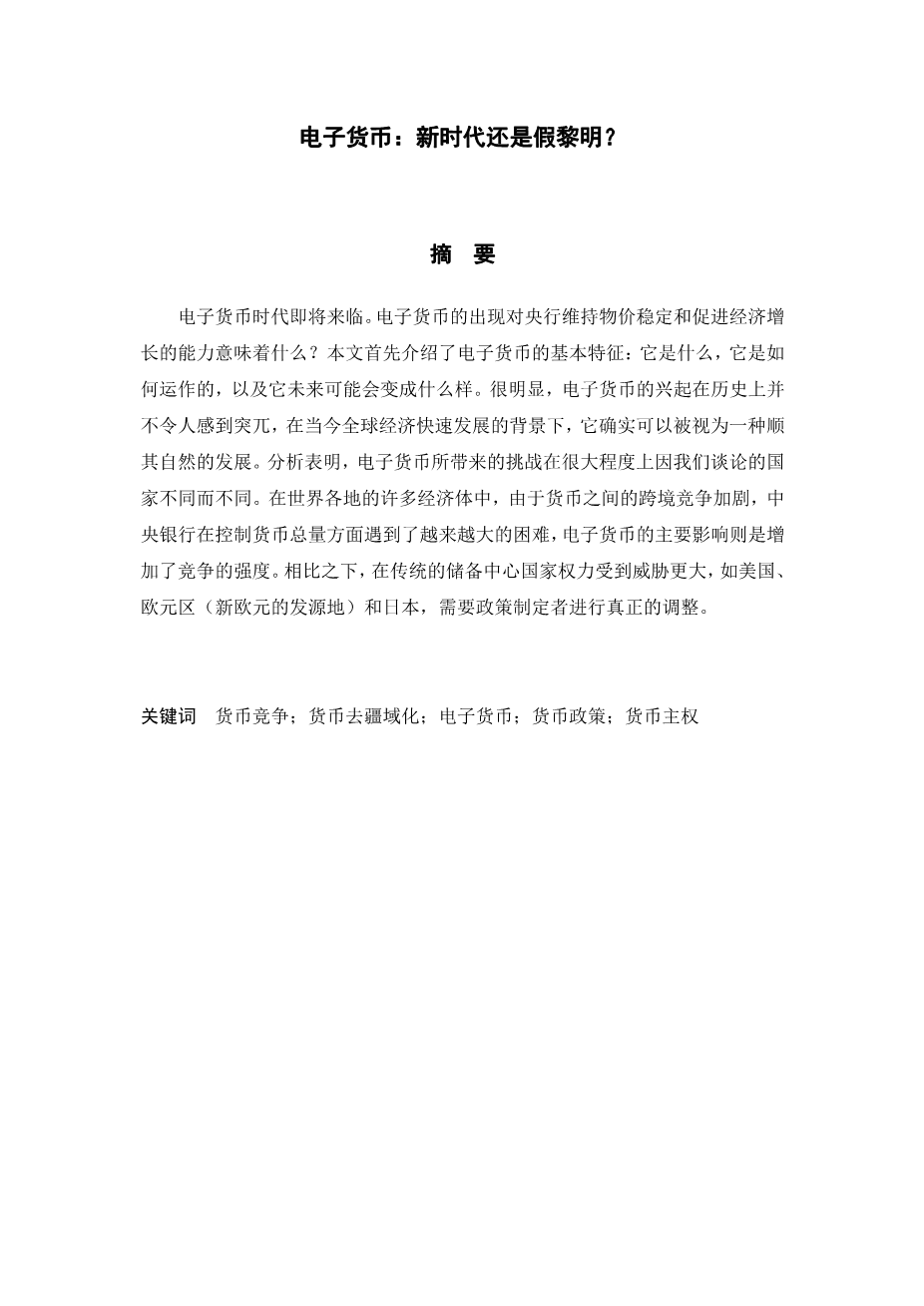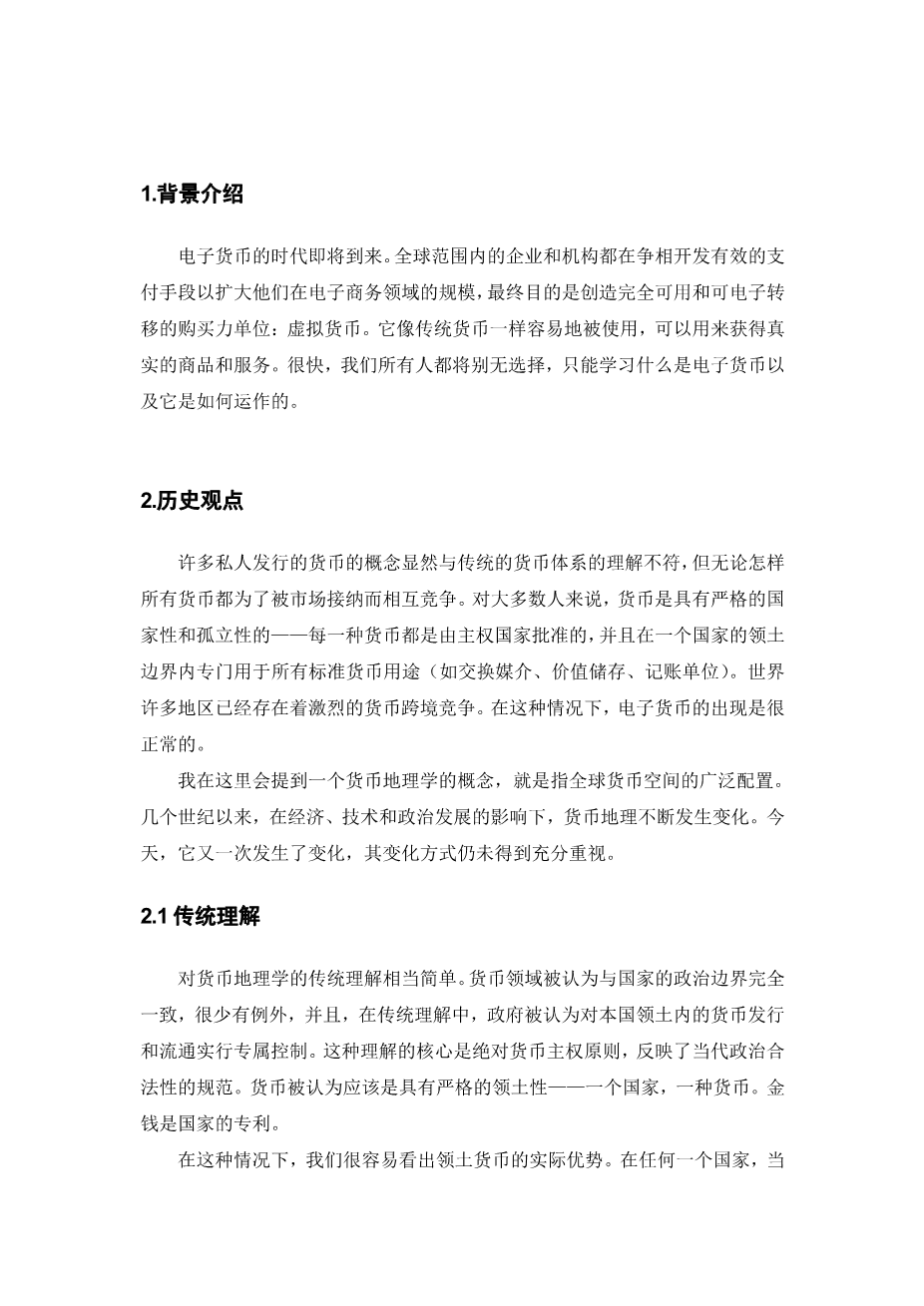Electronic money: new day or false dawn?
ABSTRACT
The era of electronic money will soon be upon us. What will the advent of electronic money mean for the capacity of central banks to sustain price stability and promote growth? This article begins with a basic primer on the essential characteristics of electronic money: what it is, how it operates, and what it is likely to look like in the future. The rise of electronic money, it is clear, is no anomaly in historical terms and indeed may be regarded as an entirely natural development in the context of today's rapidly globalizing world economy. Analysis suggests that the challenge of e-money differs significantly depending on what countries we are talking about. In the many economies around the world where central bankers are already experiencing increased difficulty in controlling monetary aggregates, owing to accelerating cross-border competition among currencies, the main impact of electronic money will be simply to add to the intensity of that competition. By contrast, in the traditional reserve centers -- the US, Euroland, (home of the new euro), and Japan -- the threat to state power appears distinctly greater and will demand real adjustments by policymakers.
KEYWORDS: currency competition; currency deterritorialization; electronic money; monetary policy; monetary sovereignty
INTRODUTION
Electronic money is an idea whose time, it seems, is about to come. Around the globe, entrepreneurs and institutions are racing to develop effective means of payment for the expanding realm of e-commerce. The aim is to create units of purchasing power that are fully usable and transferable electronically: Virtual' money that can be employed as easily as conventional currencies to acquire real goods and services. Soon all of us will have little choice but to learn what electronic money is and how it operates.
HISTORICAL PERSPECTIVE
The notion of a multitude of currencies, many of them privately issued and all competing actively for market acceptance, is obviously at variance with conventional understandings of currency systems and monetary management. For most people, money is strictly national and effectively insular - each currency sanctioned by the sovereign state and exclusively used within a country’s territorial frontiers for all standard monetary purposes (medium of exchange, store of value, unit of account). Intense cross-border competition among currencies already exists in many parts of the world. In that context, the advent of electronic money can hardly be considered anomalous.
What I call the geography of money is the broad configuration of global currency space. Over the centuries monetary geography has changed repeatedly under the influence of economic, technological, and political developments. Today it is changing yet again in ways still not fully appreciated.
Conventional understandings
The conventional understanding of monetary geography is quite simple. Currency domains are assumed to coincide precisely with the political frontiers of nation-states, with few exceptions, and governments are believed to exercise exclusive control over the issue and circulation of money within their own territory. At the heart of this understanding, reflecting contemporary norms of political legitimacy, is the principle of absolute monetary sovereignty. Currencies are and, it is thought, should be strictly territorial - One Country/One Currency. Money is properly the monopoly of the state.
It is easy to see the practical advantages of a territorial currency. Within any given country, network externalities will be maximized when there is but a single money in circulation. It is also easy to see why a monetary monopoly might be highly prized by governments. Genuine power resides in the command that money represents. In fiscal terms a territorial currency offers a potentially rich source of revenue, seigniorage, to underwrite public expenditures - an advantage that is of value in moments of crisis or threat to national security. Politically, it embodies a potent political symbol to promote a sense of national identity as well as a practical means to insulate the nation from foreign influence or constraint. Most importantly, in the opinion of most specialists, a monetary monopoly provides a powerful instrument to help manage the macroeconomic performance of the economy. That is monetary policy in the traditional sense of the term and the focus of this article.
Since World War II, by contrast, the tide has clearly reversed. The trend today, quite decisively, is back away from monetary insularity, as exchange and capital controls have gradually fallen out of favor. Increasingly, we see greater and greater direct competition among currencies, regardless of the preferences of governments that would still wish to maintain an independent monetary policy. Money is once again becoming reterritorialized, much as in the centuries prior to the era of territorial currency, making conventional understandings of monetary geography increasingly obsolete.
2.2Currency deterritorialization
Currency deterritorialization is part and parcel of the accelerating globalization of world economic affairs. Driven by deregulation as well as the pressures of competition and technological innovation, financial and monetary systems have become increasingly integrated, effectively broadening the array of currency choice for many trans-actors and investors. Despite government efforts to preserve traditional monetary monopolies, currencies now compete directly for market confidence and allegiance. As a result, monetary domains today diverge more and more sharply from the legal jurisdictions of states and are defined more by the networks of market actors that use them than by the territorial frontiers of the governments that issue
全文共19736字,剩余内容已隐藏,支付完成后下载完整资料


英语译文共 7 页,剩余内容已隐藏,支付完成后下载完整资料
资料编号:[452449],资料为PDF文档或Word文档,PDF文档可免费转换为Word


